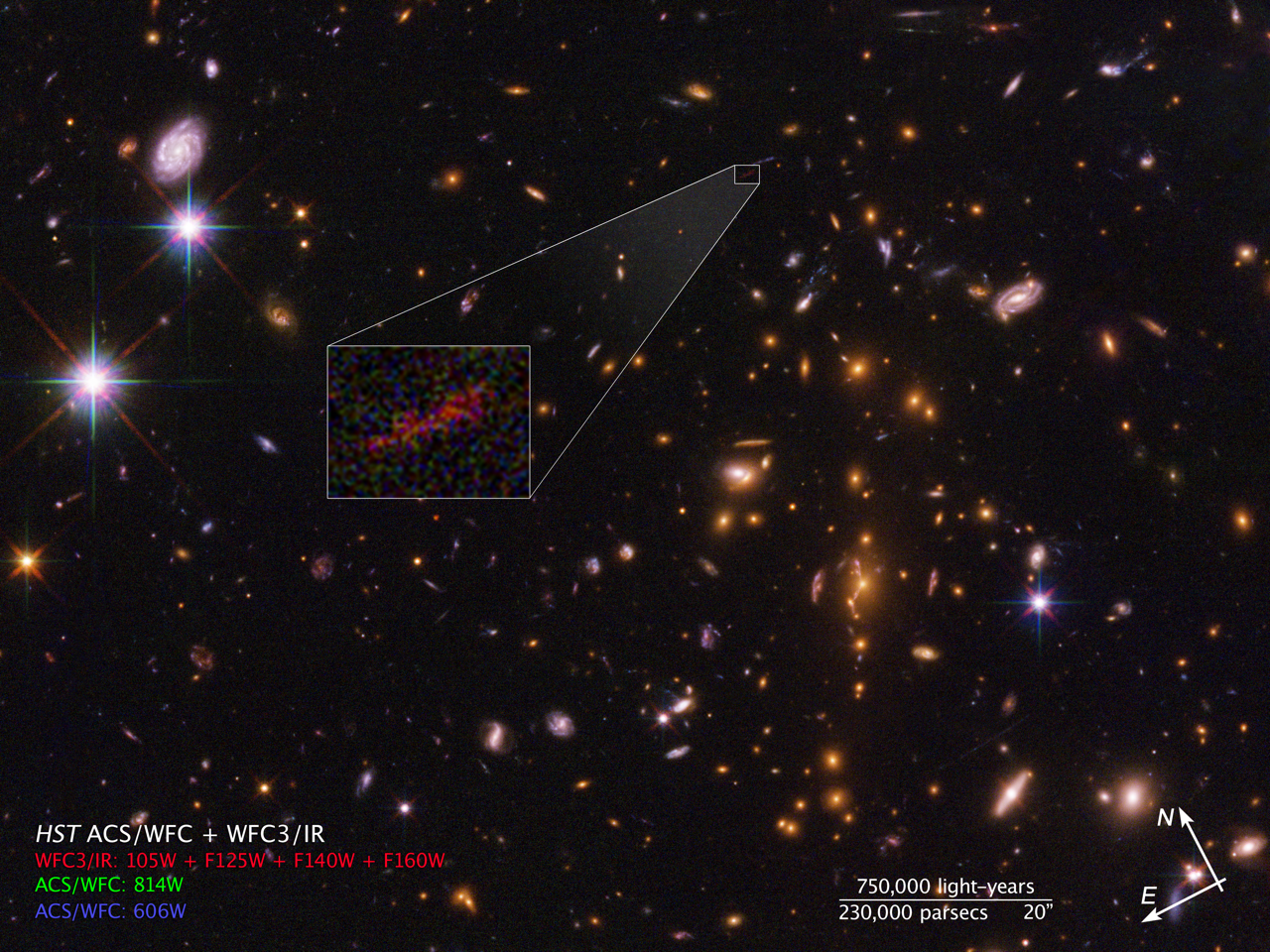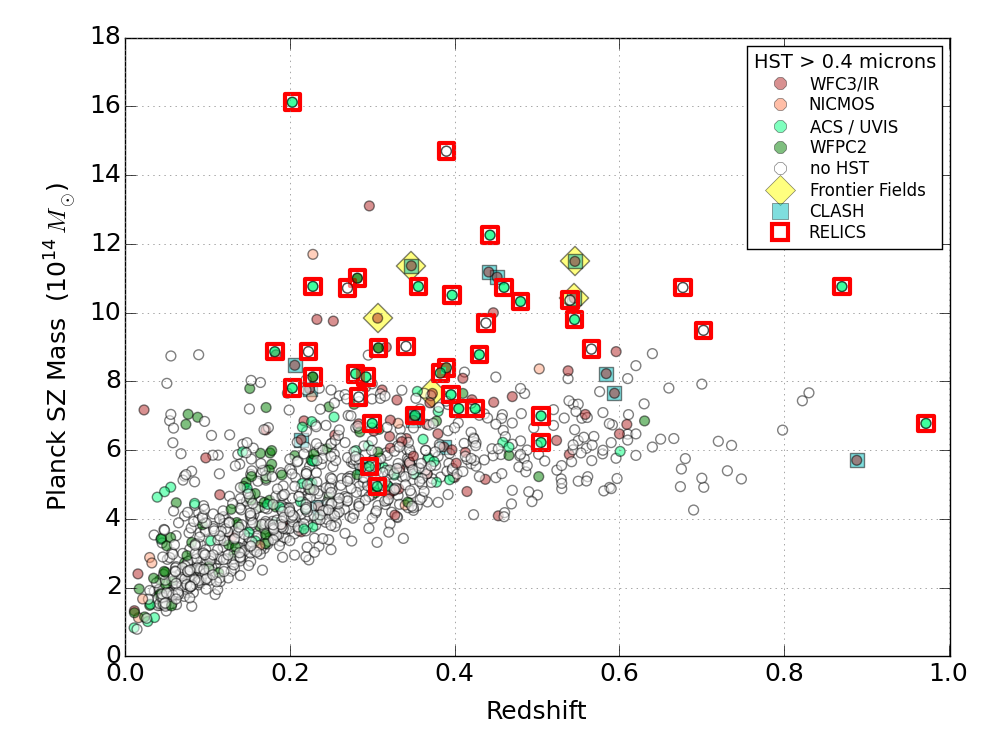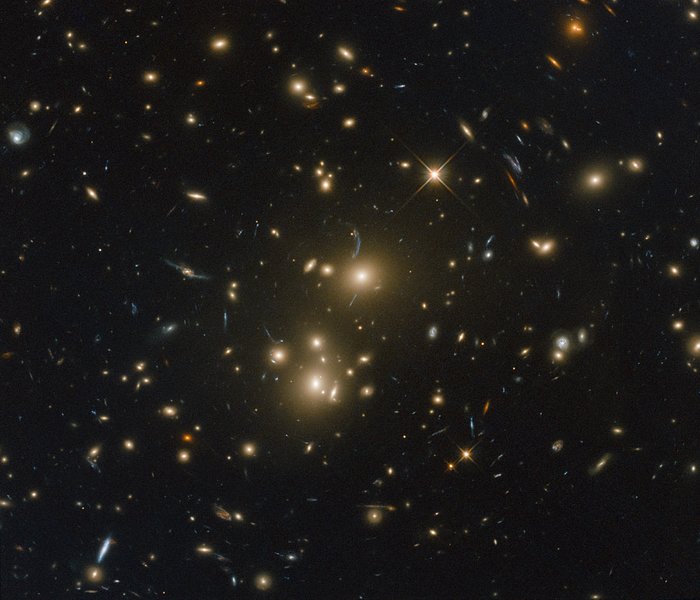Science
RELICS science topics include:
• high-redshift galaxies
• cluster mass scaling relations
• supernovae to empirically test lensing models
• dark matter particle constraints
Left: SPT0615-JD at z ~ 10, the most distant lensed arc known (Salmon et al. 2018). See our NASA/STScI press release.



